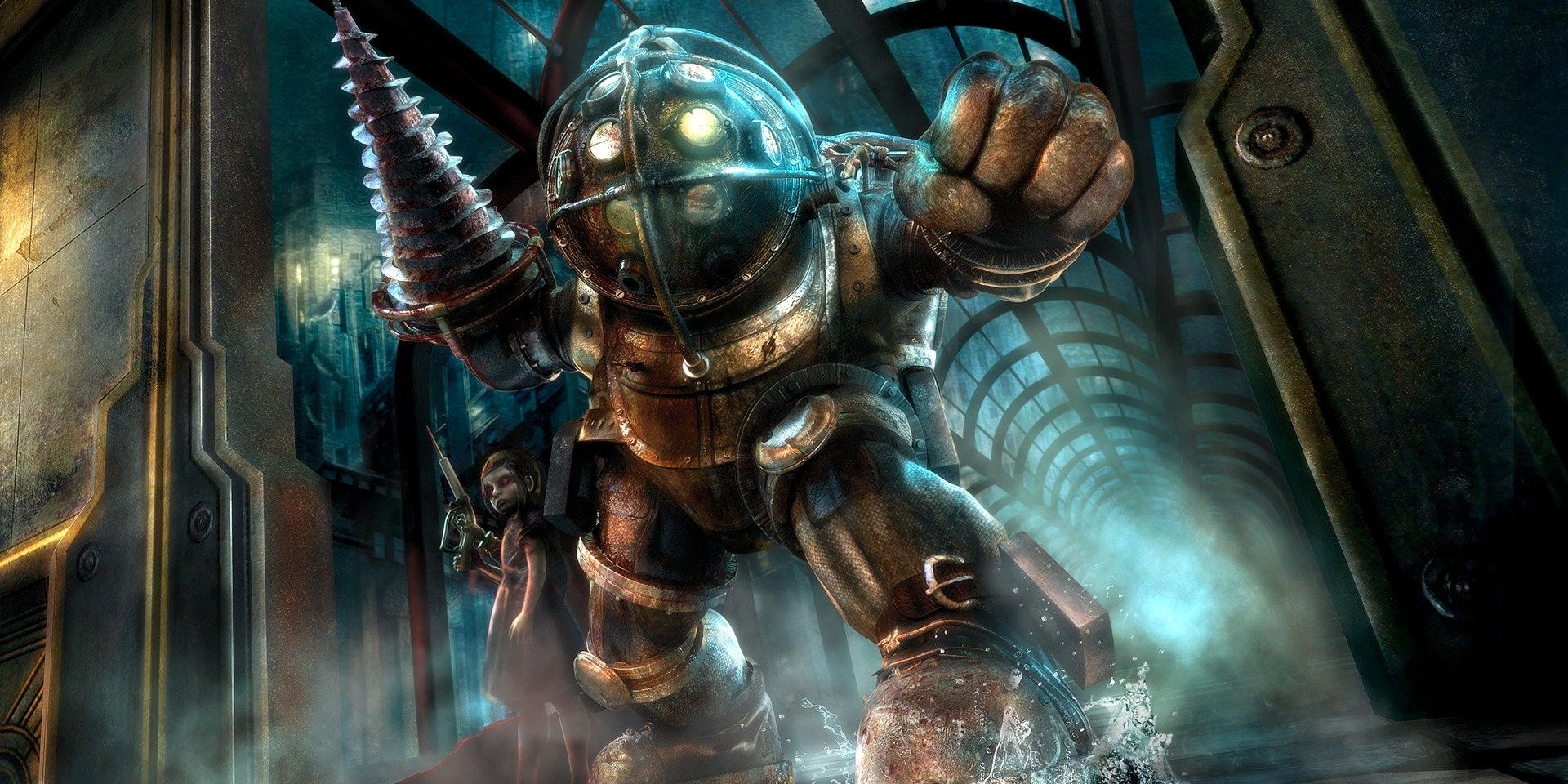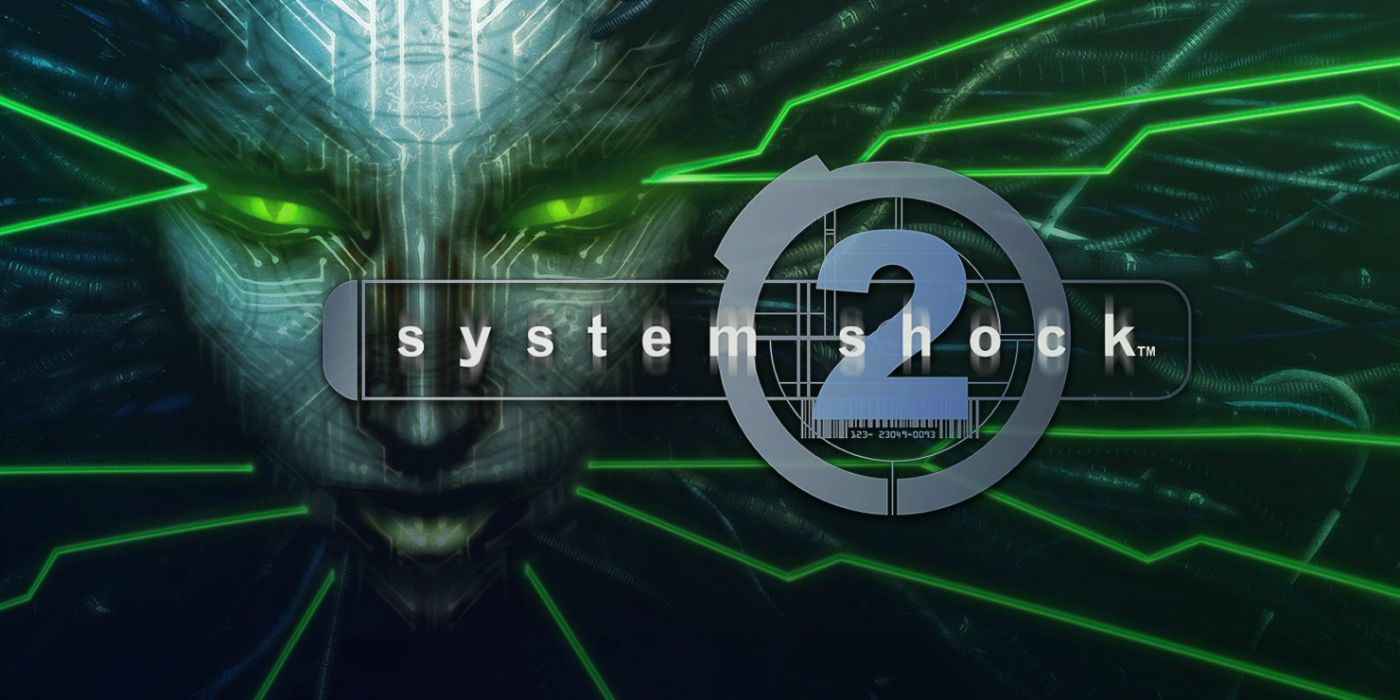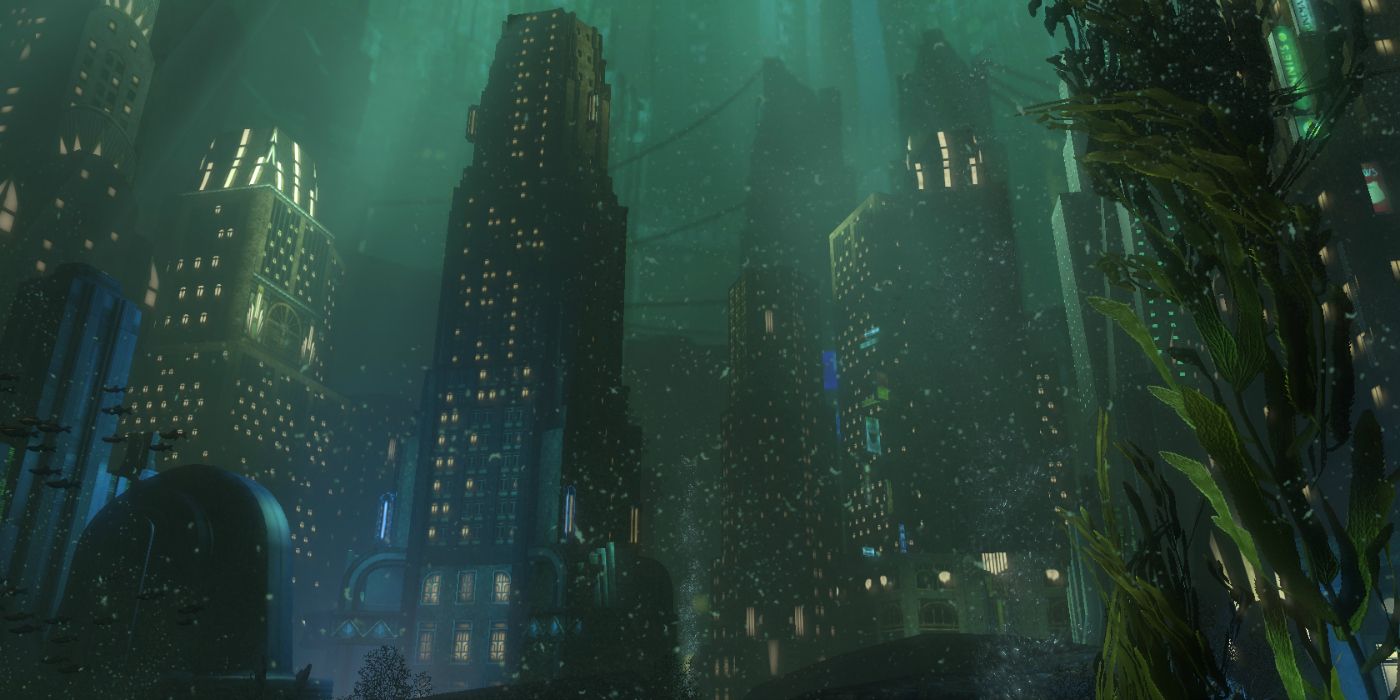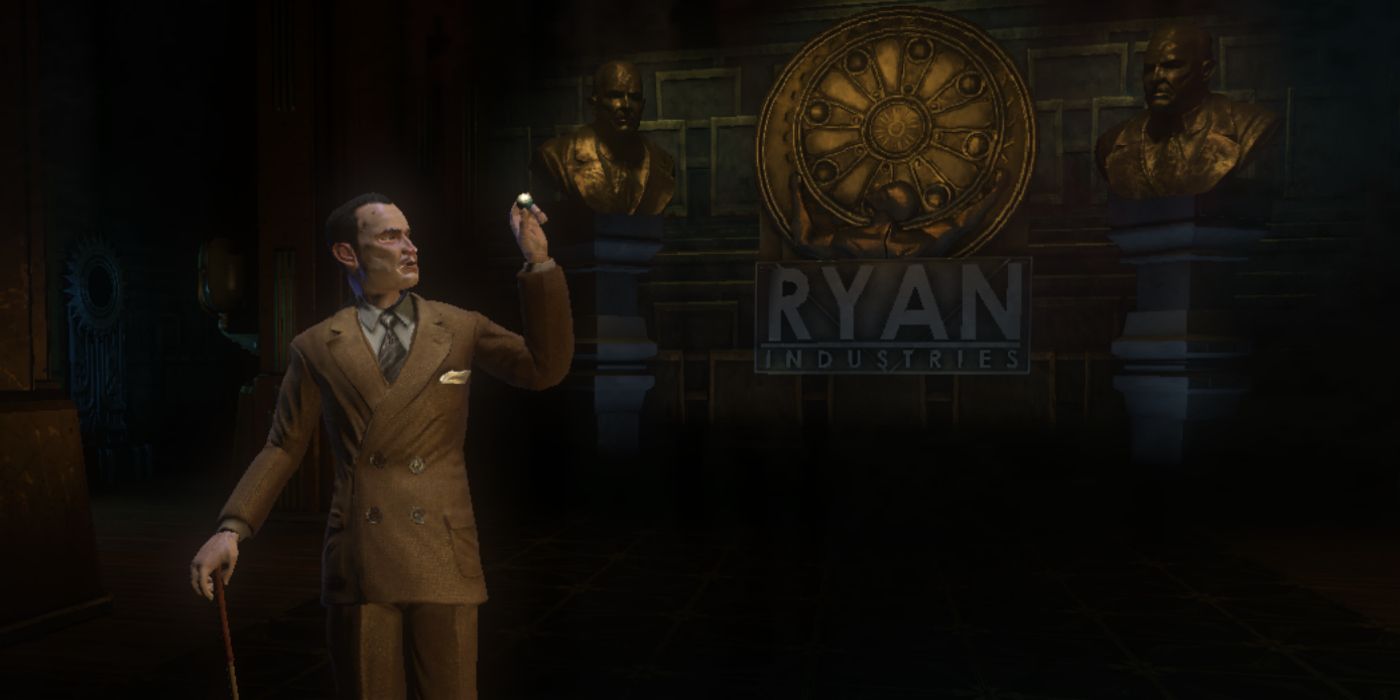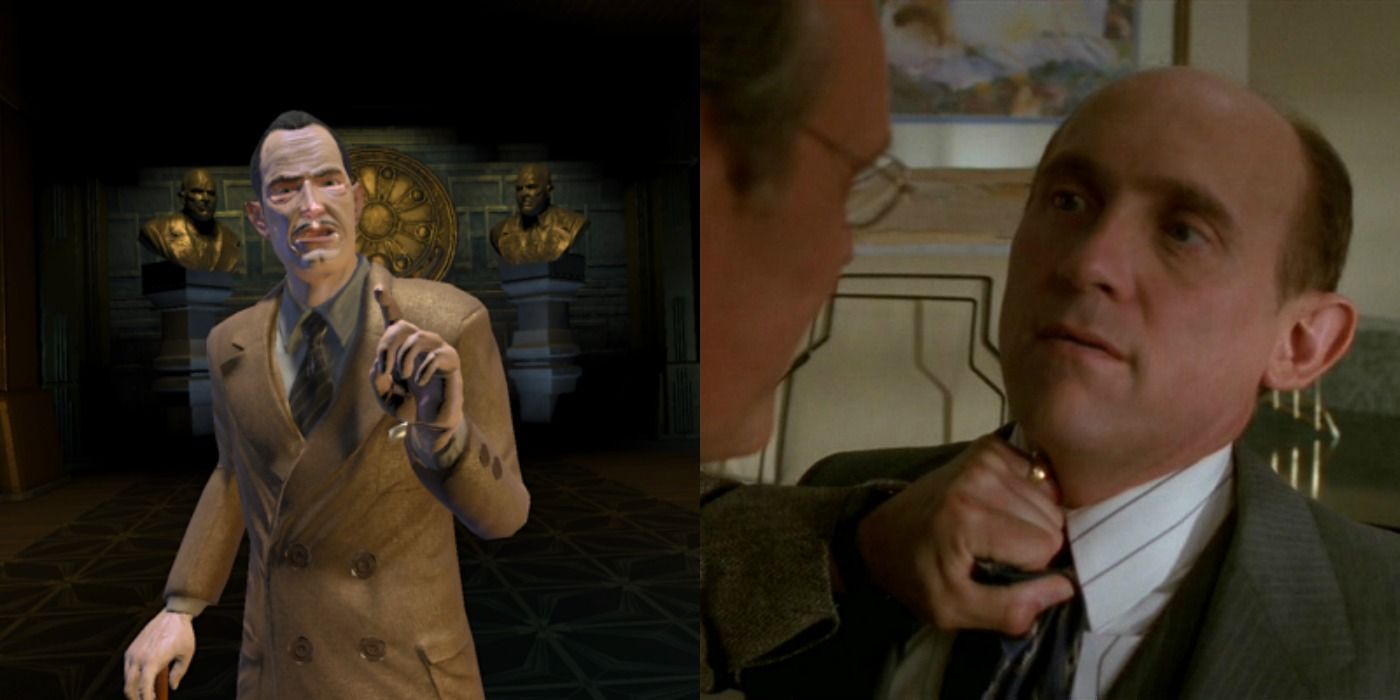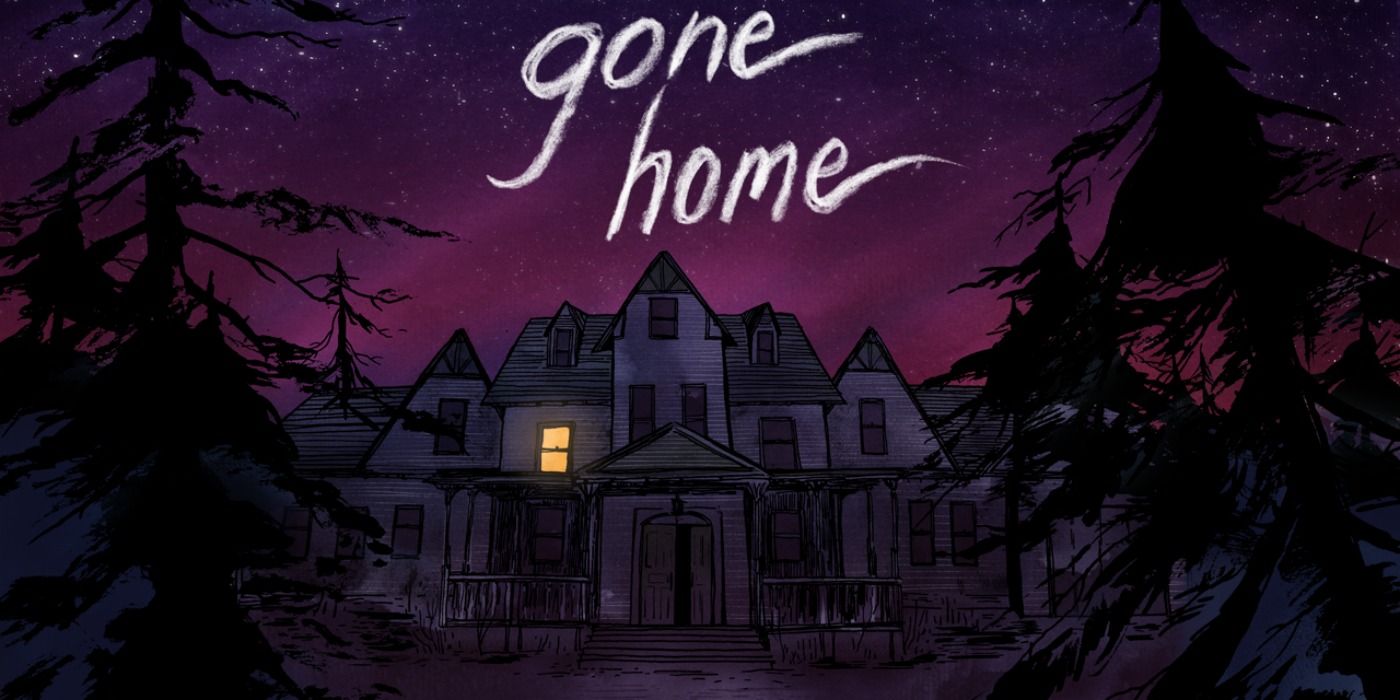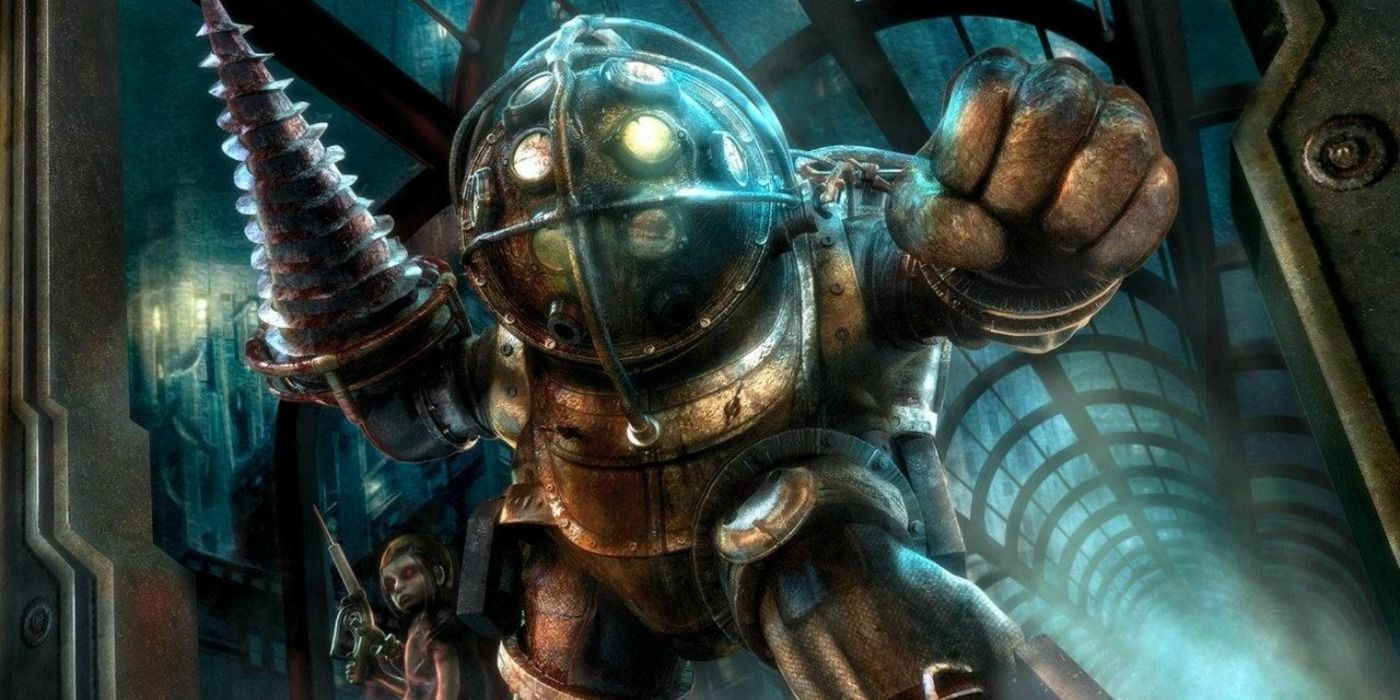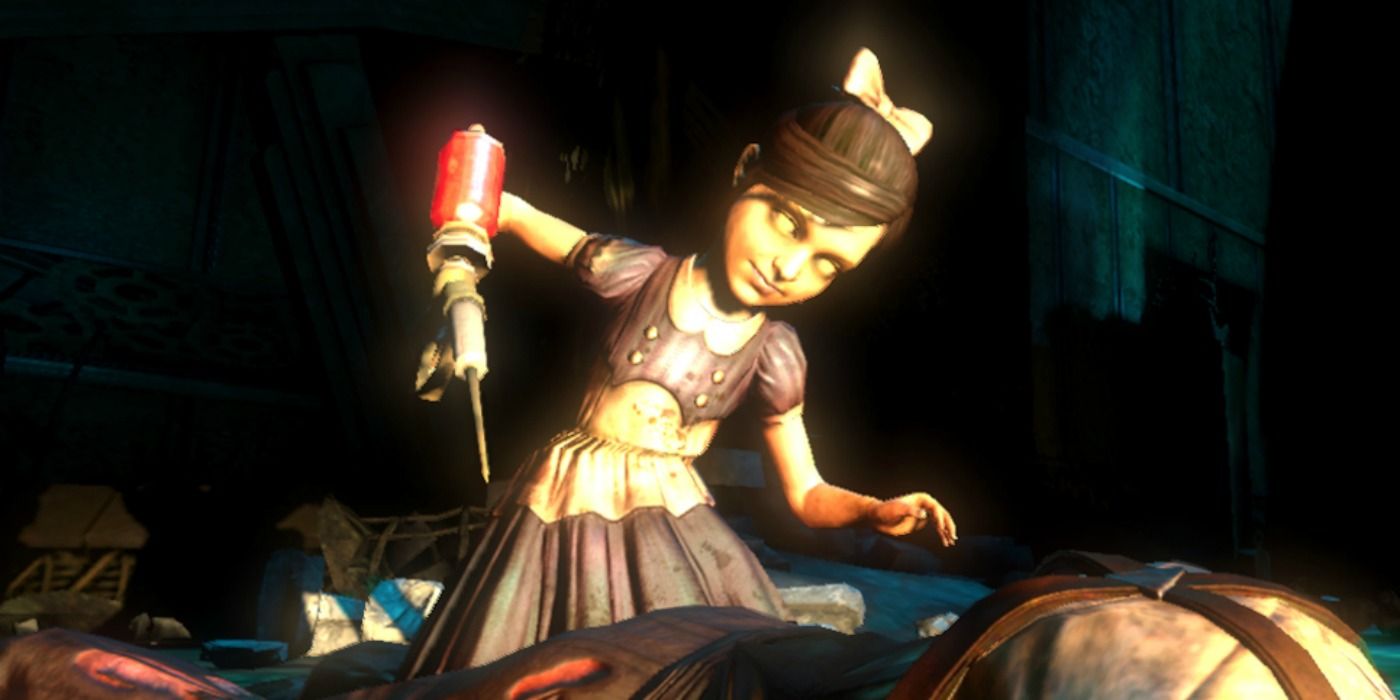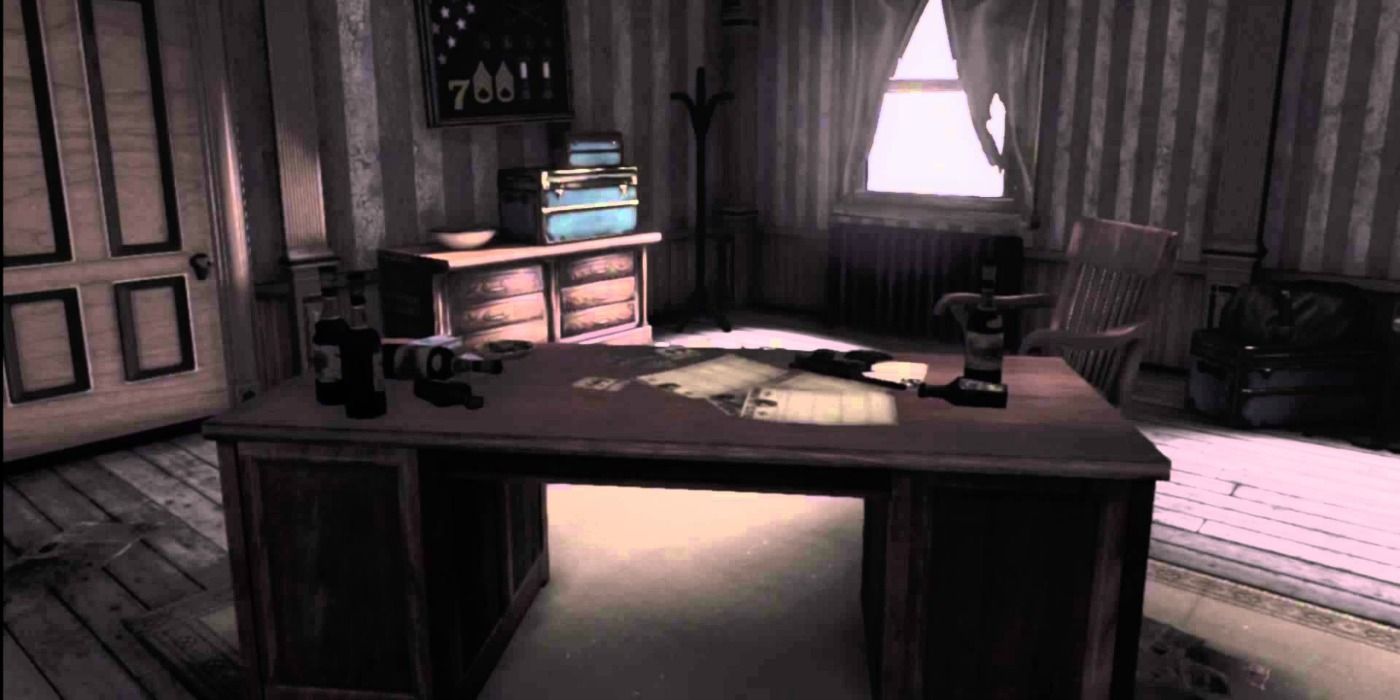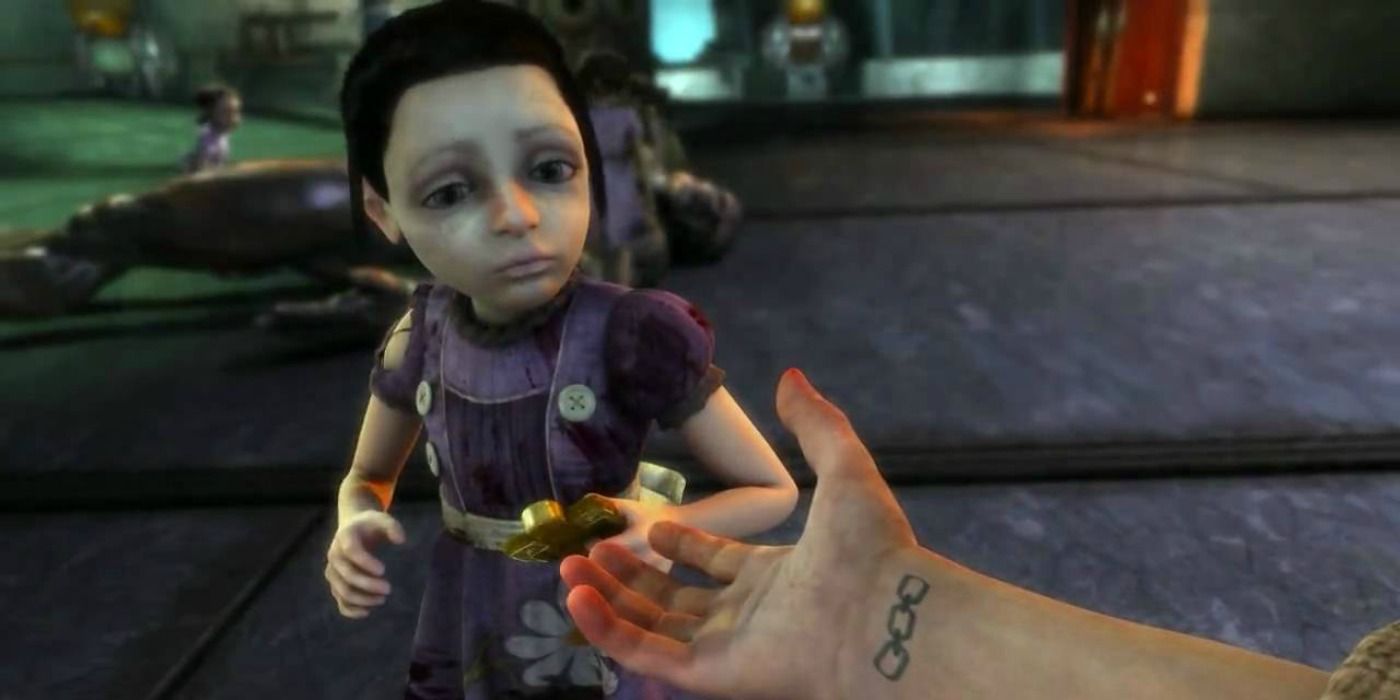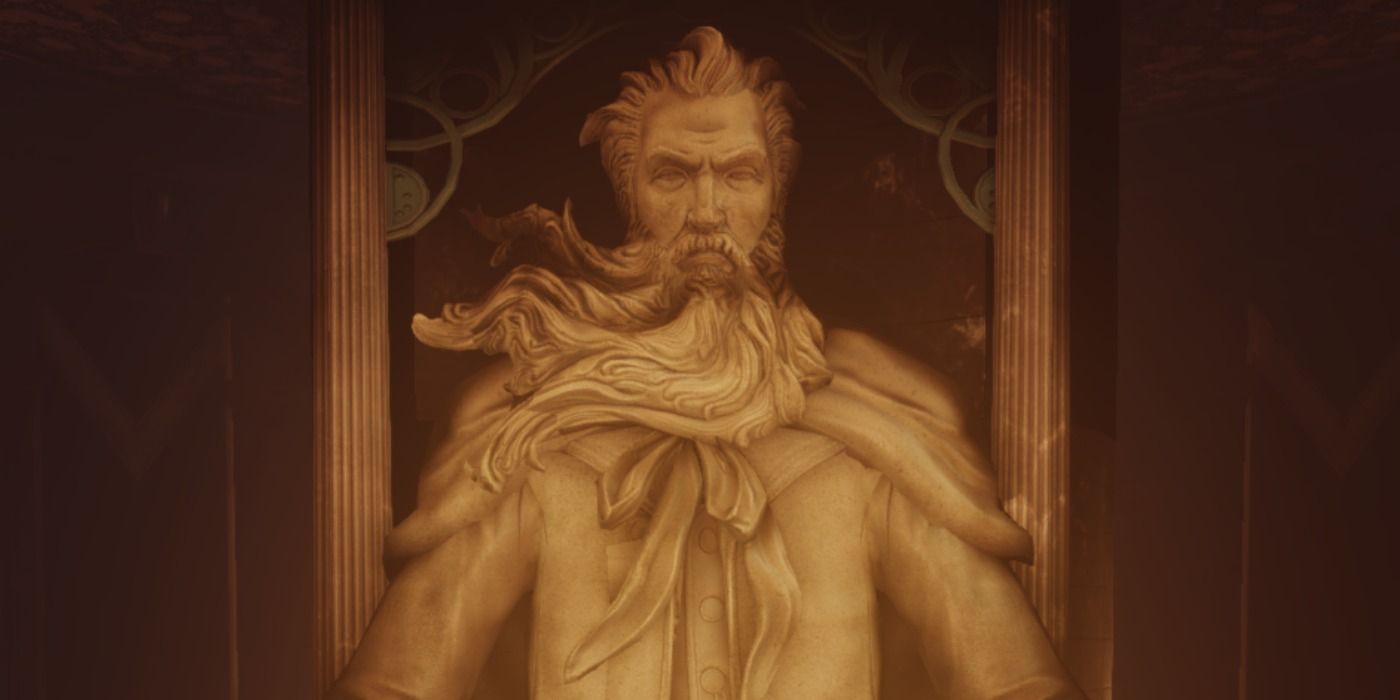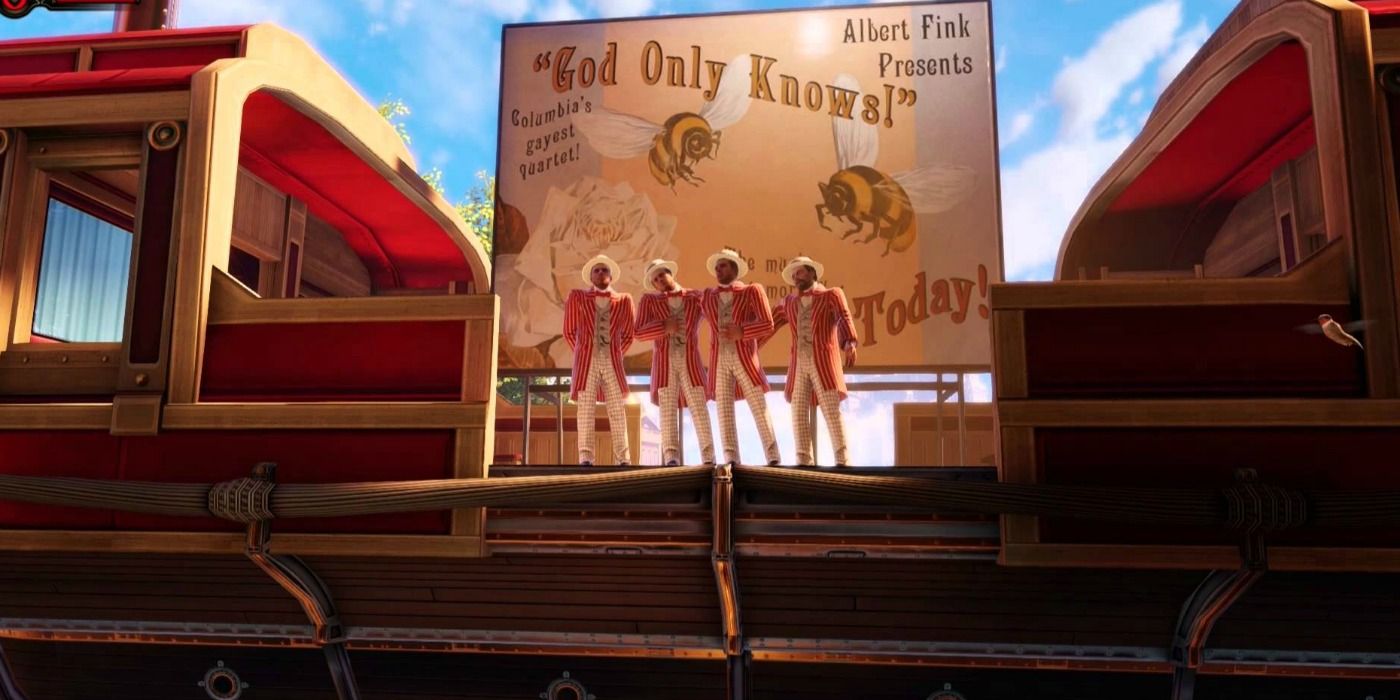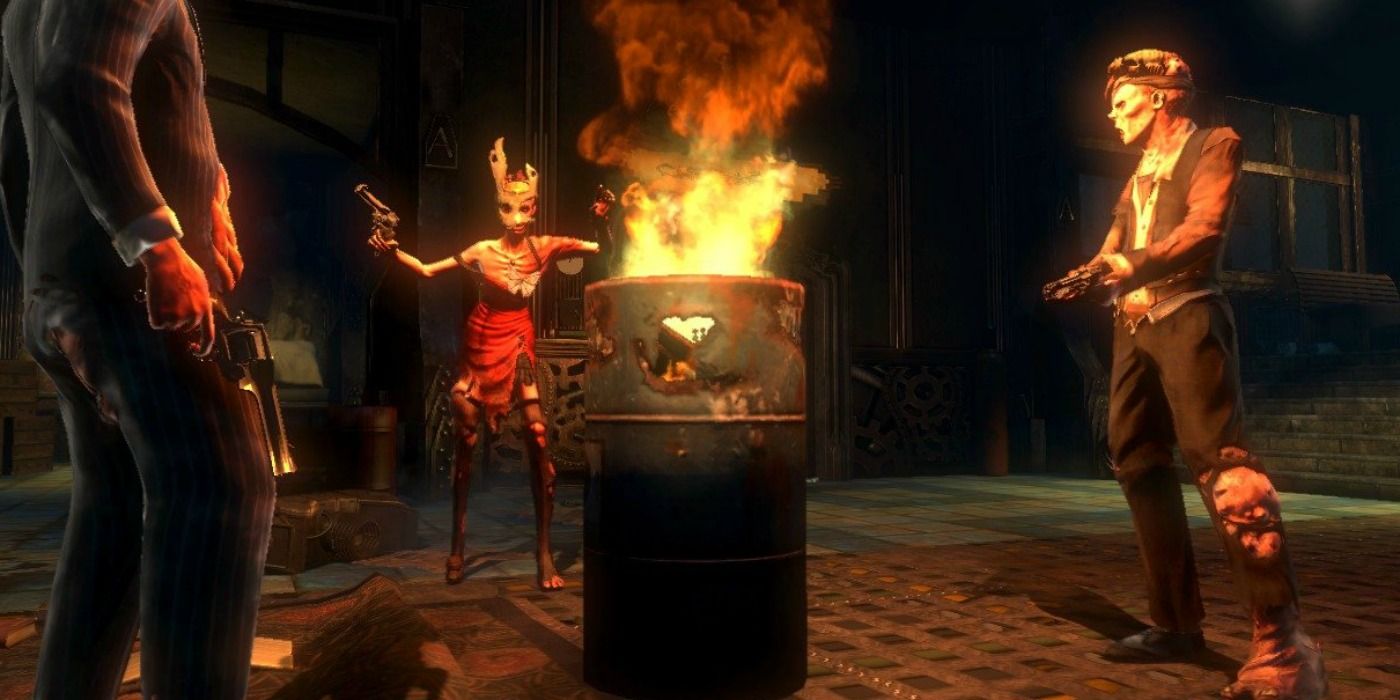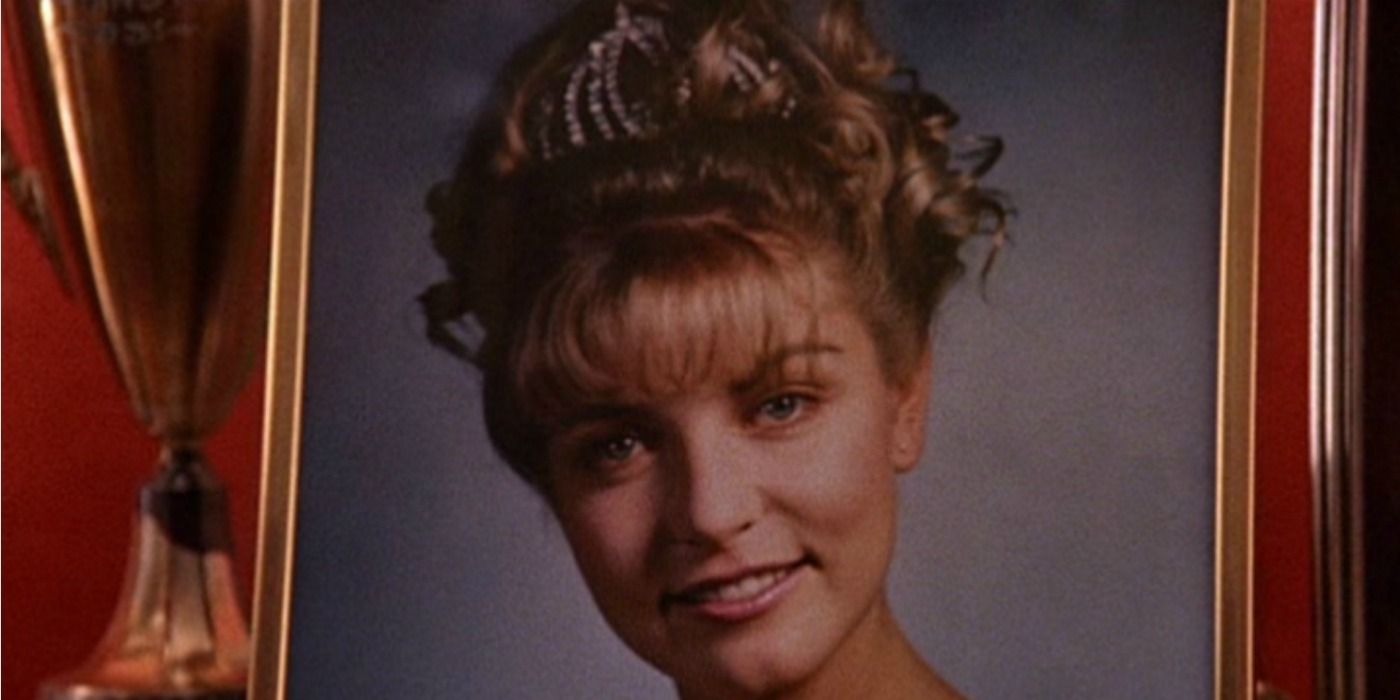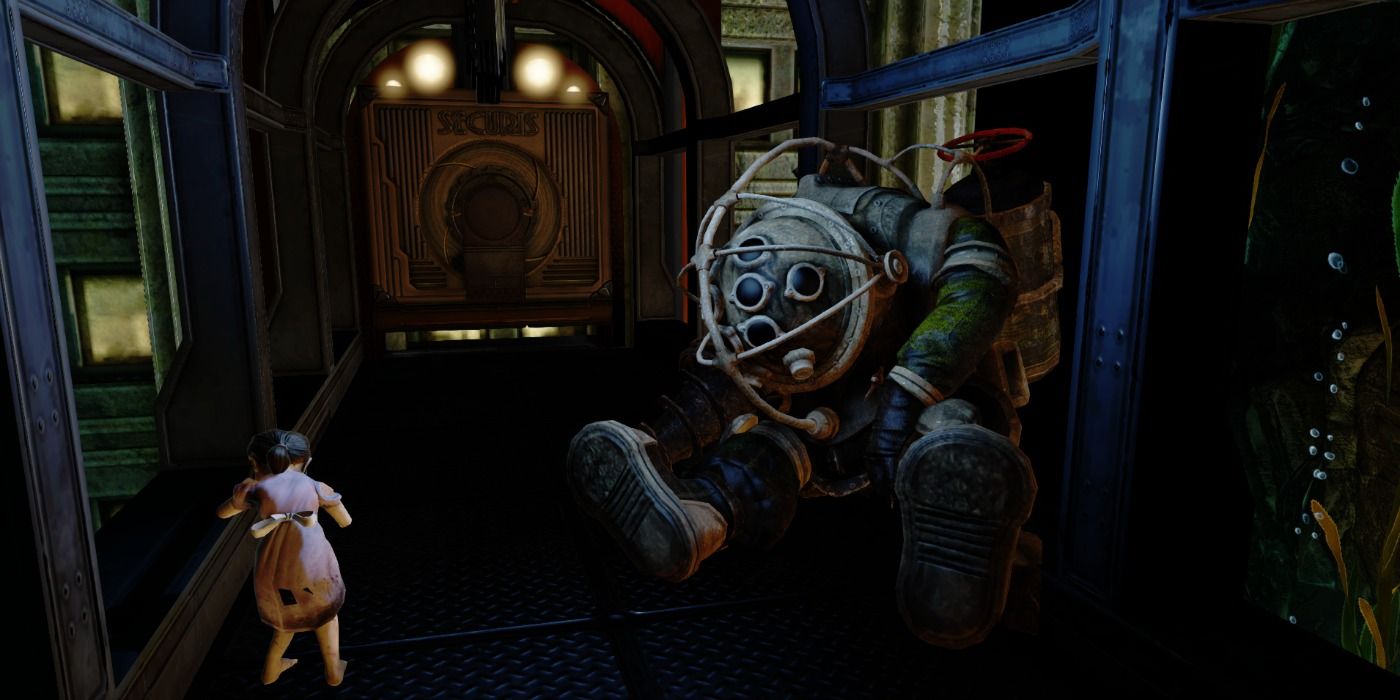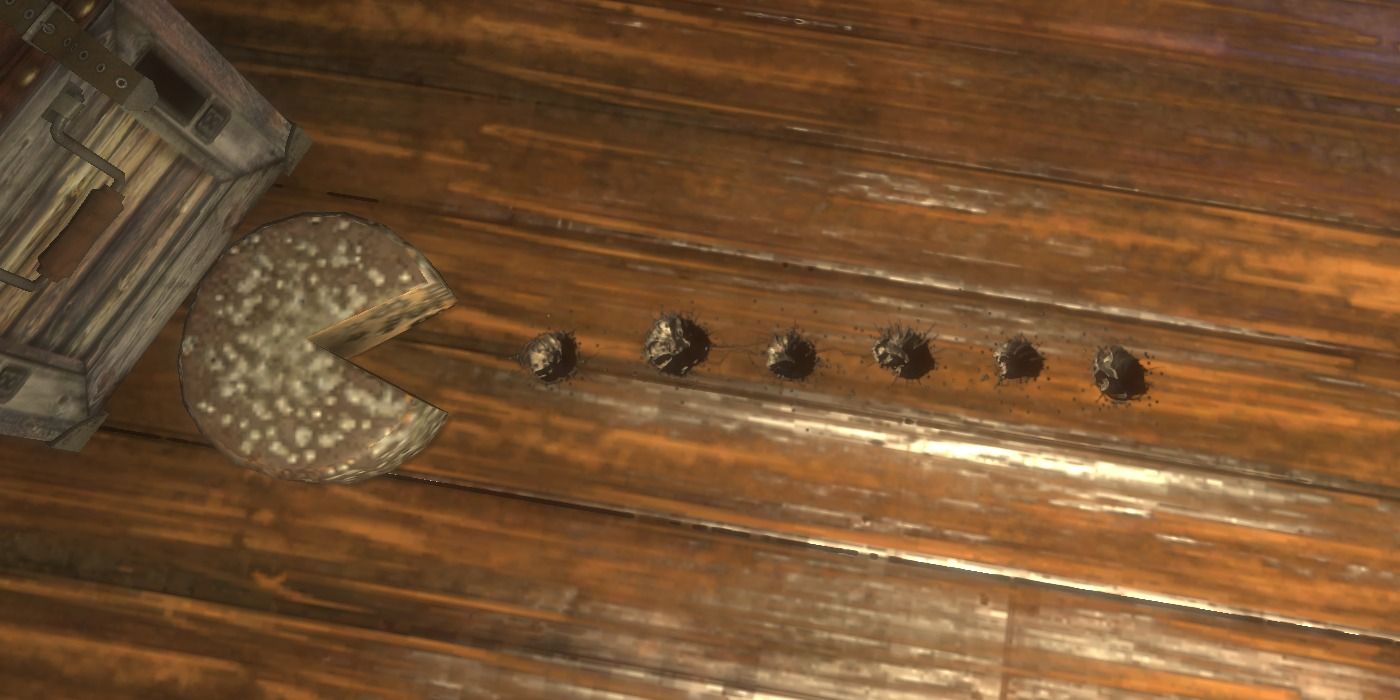Few games have pushed the genre of first-person shooters, and video games as a whole, forward in the same way that the Bioshock series has. The first two Bioshock games managed to take the tired first-person shooter genre and use the medium to take players to the beautiful and unsettling underwater world of Rapture, propelled by a thematically rich story unlike anything else on the market at the time. Irrational Games followed up the Rapture duo of games by taking to the skies with Bioshock Infinite, which featured many of the same touchstones while taking the philosophies of the game in a wild new direction. With the release of Bioshock: The Collection, both newcomers to the franchise and fans of the original games will be stepping into the worlds of Rapture and Columbia – but even if you are revisiting the games, a few details may have slipped by. Would you kindly complete your Bioshock education by seeing what details from the franchise you likely missed? These are 15 Things You Didn't Know About Bioshock.
15. It Was Built Off Of System Shock 2
Although Bioshock's development company Irrational Games will forever be associated with the franchise, the team had 6 completed games under their belt before they achieved mainstream success with the release of the first Bioshock. While prior Irrational titles like Freedom Force or Tribes: Vengence failed to leave the splash that Bioshock eventually would, there was one game that hinted at Irrational's potential. A game so well-received and creatively fulfilling that it served as the jumping-off point for Bioshock itself.
"Let's make a game like System Shock 2," says Lead Programmer Chris Kline in the Bioshock making of documentary included with the collector's edition of the original title. "but make it our own, make it different." System Shock 2 was Irrational Games' first major success, a first-person cyberpunk shooter that included gameplay elements that would late be found in Bioshock, such as the use of audio logs for narrative purposes, ghostly visions of the dead, and the incorporation of many RPG elements into the FPS genre.
14. Bioshock Almost Took Place In Modern Times
From the moment audiences started getting a glimpse at the original Bioshock, one thing stood out above all others – the setting. The world of Rapture is truly unlike anything else that had been introduced in video games – or any medium – before. A world that so effortlessly combined the familiar (the art deco architecture and design of the 1950s) with the absurd (it's all underwater) that was the player's to explore. Bioshock Infinite mirrored this with an early 20th-century approach to a floating city, but at one point Bioshock didn't have the period-specific setting that would define the franchise.
Nate Wells, Technical Artist, said that the Original Bioshock has gone from everything to modern day to the far future. While those plans quickly fell to the wayside, it's fun to imagine what interesting twist that Bioshock might apply to the present era. At the present moment, Irrational Games has no publicly announced plans to return to the Bioshock franchise – but that doesn't mean that Irrational's creative director Ken Levine doesn't have some cards up his sleeves, and perhaps a modern day Bioshock is one of them.
13. Bioshock Almost Had A Much Different Enemy
Bioshock presented a fantastical world beneath the sea, filled with disturbing Splicers and terrifying Big Daddies that would try to take down the protagonist at every turn. While the true antagonists were far less disturbing in appearance – they were simply other humans – their twisted ideals made them so memorable. While the enemies of Bioshock left a strong impression on the player, the game almost had a very different type of enemy populating the world of Rapture.
Bioshock developers revealed that originally had "the idea that the city was run by 'Savants' who were these genetically engineered characters that they became these brains-in-a-jar kind of thing ... You were originally going to defeat a different savant on every level of the game." While the idea sounds interesting in theory, the brain-in-a-jar character has unfortunately become fairly cliched. Luckily, lead developer Paul Hellquist was able to recognize that “It was a stupid idea," and instead created the demented human beings that look over Rapture.
12. Andrew Ryan was in Buffy The Vampire Slayer
While the setting drew many players into the world of Rapture and the Bioshock franchise, it was the cerebral and philosophically-challenging storyline that kept players hooked until the end. There were only a few humans inhabiting the world of Rapture, but the most memorable among them was Andrew Ryan – the self-proclaimed visionary and founder of Rapture. Upon hearing the Randian megalomaniac's first words, many gamers likely didn't recognize the actor's voice but perhaps a few of the more devout followers of Buffy The Vampire Slayer pictured a certain Principal upon hearing his words ring out.
Principal Snyder is the second of the multiple principals that Sunnydale High School goes through over the course of the series, and oddly enough, the one that lasts the longest. Character actor Armin Shimerman, who played the roles of Principal Snyder and Andrew Ryan, is also known for playing the heavily made-up role of Quark in Star Trek: Deep Space Nine and oddly enough a role in the film adaptation of Atlas Shrugged. The casting agent that determined that the man whole plays the most prominent Randian figure in video game history should be in the Atlas Shrugged film surely deserves a raise.
11. A Bioshock 2 DLC Is The Reason Gone Home Exists
Indie game Gone Home made waves when it was released, but not always for the most popular reasons. While some derided it as simply a "walking simulator" that forced players to strut around an empty house for two hours, others like Danielle Riendeau of Polygon called Gone Home "a master class on how to tell a personal, affecting story in a video game." Whatever your opinion, there's no denying that the popularity of Gone Home has influenced the release of similar games like Everybody's Gone To Rapture and Firewatch – and it exists thanks to the Bioshock 2 DLC Minerva's Den.
The Fullbright Company, the developers behind Gone Home, worked together on Minerva's Den and the positive experience inspired them to spin-off from 2K Marin (the development company behind the DLC) and form their own independent studio to explore the same story-driven first-person experiences they initially worked on with Minerva's Den. However you feel about Gone Home, Bioshock 2 is directly responsible for its existence.
10. Some Big Daddy Designs Didn’t Make It To The Final Game.
When fans think of Bioshock, the first image they think of isn't the weapons or the other human characters – they instead think of either the devastation of Rapture or the menacing Big Daddies that populate the once-flourishing city. The most famous Big Daddy design is the "Bouncer", featured on the cover of the game, although the original Bioshock also featured the "Rosie" models, even allowing the player to enter one of the Rosie suits for a portion of the game. However, the game originally had a third model that never saw the light of day.
The developer's name for the lost Big Daddy design was the “Slo-Pro-Fum” , which apparently stood for "Slow Protector - F’d Up Melee”. The Big Daddy was planned to utilize heavy artillery when tracking down its enemies and developers explained that is was “basically the tank [archetype]”. While good content often gets left on the cutting room floor, the loss of the Slo-Pro-Fum wasn't easy for some. Bioshock Technical Artist Nate Wells stated that “this was my favorite [design]…it’s still not clear to me why they got cut.”
9. Little Sisters Weren't Always Human
Alongside the Big Daddies, one of the lasting creature creations from the Bioshock franchise are the Little Sisters, the small human girls turned into brainwashed scavengers. These Little Sisters also serve as the crux for Bioshock's main ethical conundrum, where players are given the option to either Save the little sisters or Harvest them. Harvesting seems to offer a higher reward than saving them, but it also involves killing an elementary school-aged girl and feeling like a bad person.
While the decision of whether or not to harvest the Little Sisters is crucial to the game, it was initially a long journey for Little Sisters to become the Little Sisters that fans recognize. The developers had long envisioned some kind of "gatherer" character that players could either save or destroy and some initial designs included sea slugs, crabs, and even wheelchair-bound dogs. However, the developers settled on the idea of the small human girls to fill the role of "gatherer", believing that it would truly challenge players ethically.
8. Bioshock Infinite has a post-credits scene
Bioshock Infinite lived up to the precedent set by the original in many ways, but the one area where Infinite easily surpasses the original is in the ending. After featuring one of the most famous plot twists in video game history, some players see Bioshock's ending as an anticlimax after the sheer mind scramble of a plot twist that divided the game's narrative into two distinct segments. While the ending of Infinite was beloved by some and found to be overcomplicated and pretentious by others there is no denying that it's extremely memorable – but it's not really the ending.
If you stick around after the credits of Bioshock Infinite, you'll be treated to one last segment. In this dream-like sequence, the player awakens in the apartment of main character Booker DeWitt. When they go to open the door to Anna's room, it slowly opens as Booker calls out the name of his daughter and then – the screen cuts to black. As if the true ending wasn't thought-provoking enough, the ending offers no easy answers and only additional questions – a very Bioshock ending, indeed.
7. It's Still Unclear Which Bioshock Ending Is Canon
There are three ways that the original Bioshock can end. There's a good ending – where you take all the saved Little Sisters back to the surface and raise them as your daughters. There's the bad ending – where you take control of the Splicers and the resources of Rapture in a play for world domination. Then there's the worse ending – which is essentially the same as the bad ending except the narration has extra vitriol and anger in it. However, Bioshock has now had two sequels and most games with multiple endings are usually forced to buckle down on which ending was the real ending. Like many "rules" about video games, that's not the case with Bioshock.
Fans only have been speculating over which ending is "canon" ever since Bioshock 2 was released, but within Bioshock 2 there is no concrete indication as to which ending actually happened in Bioshock, and Bioshock Infinite arguably makes the entirety of Bioshock pointless in the bigger picture anyway. If you're looking for clear-cut endings and narratives, maybe stick to Mario.
6. An Artist Almost Quit Infinite Over Portrayal Of Christianity
If Bioshock was about the flaws of a world that valued power above all else, then Infinite is about the flaws of people relinquishing their own power to another figure – in this case the religious leader Father Comstock. While the religious fanaticism present throughout Infinite reflects the beliefs of religious conservatives of the early 1900s, it certainly isn't a friendly portrayal of Christianity. In fact, one artist on the game found the portrayal so problematic that they almost quit Irrational Games.
The artist, a christian, had given Ken Levine a resignation letter, but Levine instead started opening up a dialogue about how to correct Comstock so that others wouldn't react in a similar way. As Levine told Gamespot, "when we started talking, I realized that something I could connect to was a notion of forgiveness and what an important part that is of the New Testament and why Christ was such a revolutionary figure." This concept of forgiveness ended up working its way into the final narrative of the game. "And thinking about how I would incorporate the power of that notion to Comstock into his world was, to me, the key. Because who hasn't done things that they don't want to be forgiven for?" After changes were made to Comstock, the artist ended up staying with Irrational.
5. There is more familiar music hidden in Bioshock Infinite than you think
There's a key moment early in Bioshock Infinite that indicates that there is more to Columbia than meets the eye. While the concept of a floating steampunk city in 1912 is already fairly odd, a new level of absurdity is introduced when Booker DeWitt walks past a barbershop quartet singing "God Only Knows" by The Beach Boys. Those familiar with the song know that "God Only Knows" wasn't released until 1966 – so how did it end up in being sung in 1912? Well, keen listeners know that "God Only Knows" isn't the only anachronistic cover to be found in Columbia.
As it turns out, composer Albert Fink was tuning in to tears in reality through which songs from the future were being broadcast – and he copied them. Throughout Columbia, players can hear a calliope cover of "Girls Just Want To Have Fun", a soulful acapella version of "Fortunate Son", and a ragtime version of "Everybody Wants To Rule The World" among others. It's clear that Albert Fink was truly a man of taste.
4. "Project Facade" Was A Large Influence On Splicer Design
While the most memorable enemy from the Bioshock is without a doubt the Big Daddy, it'd be a disservice to talk about Rapture and not talk about the horrifying Splicers – shadows of the people that they used to be, deformed by an overuse of ADAM. The Splicers serve mostly as bullet fodder as the main character travels throughout Rapture, but still provide some terrifying moments and contribute to the eerie atmosphere of Rapture. The Splicers themselves we horrifying creations, but nothing compared to the real cases that inspired them.
During the development process, the artists of Bioshock used "Project Facade" as a guideline for designing the Splicers. "Project Facade" was the result of artist Paddy Hartley attempting to tell the stories of WWI soldiers who had suffered traumatic physical damage to their faces, and the surgical attempts to repair those faces that still left them looking far different than their normal selves. This approach was fitting, as it's almost identical to the origin story behind many of the Splicers.
3. Laura Palmer Is In Bioshock 2, Thanks To A Scheduling Mix-Up
Few images define television in the '90s like the image of that actress Sheryl Lee, playing Laura Palmer. giving a half-smile, staring blankly into the camera with a tiara atop her head. This image served as a reminder to all those who obsessed over the mystery of Twin Peaks that for all the odd happenings around town and all the mystical visits to mysterious dream worlds, this was still about a young girl who was murdered. Sheryl Lee's performance as Laura Palmer has made her something of a cult icon – so why does she only have a few lines as a seemingly random Splicer in Bioshock 2?
As it turns out, Sheryl Lee's cameo appearance in Bioshock 2 was never planned. Due to a scheduling mishap, Sheryl Lee ended up in the recording studio for Bioshock 2 and the creative team realized that if Laura Palmer shows up to be in your video game, you put her in your video game. The mishap itself likely occurred because the role of Grace Holloway was played by the actress Sheryl Lee Ralph, of no relation to Sheryl Lee.
2. Big Daddy makes a cameo appearance in Bioshock Infinite
Part of the shock of Bioshock Infinite was that it was leaving the beloved, inventive world of Rapture featured in Bioshock and Bioshock 2 behind, opting instead to take to the skies. This means no Andrew Ryan, no Splicers, and no Big Daddies. While there were some substitues for many of those touchstones in Infinite, it wasn't the same. However, as the player traverses through the games and the reality of the world begins to fold in on itself, Booker DeWitt actually makes a brief visit to Rapture through a dimensional rift. Players may be excited to look around once they arrive, but if they don't play attention they may miss a cameo from Bioshock's definitive creature.
After the drowning of Songbird, the city of Rapture makes itself visible through the windows of the room that Booker and Elizabeth find themselves in. If the player looks directly across from the spot where they spawned, they'll see a Little Sister crying over what appears to be a dead Big Daddy. While it's not the most light-hearted reappearance, it's certainly better than having to deal with a live Bid Daddy.
1. There’s a Pac-Man reference hidden in Bioshock
There must an unspoken rule amongst video game creators that whenever possible, one must include a Pac-Man reference in their game. The video game industry owes a lot to the fine yellow pie-shaped man that helped introduce a generation to the fun that could be had through video games. In fact, one could even argue that Pac-Man and Bioshock aren't that different – both games feature protagonists walking around a labyrinthian environment, haunted by ghosts, collecting random bits of stuff. Perhaps the developers were keeping this in mind when they snuck a Pac-Man reference into Bioshock.
In The Worley Winery, looking around on the ground players may spot objects and foodstuffs that were once used when the Winery is still active. It's not entirely out of place to find a cheese wheel in a winery, but it seems incredibly specific that only a small chunk of the wheel is cut out to look like Pac-Man. Further, it looks like that Pac-Man cheese wheel is on its way to eat four pellets, represented in Bioshock as bullet holes. Perhaps someone from 1989 fell through a dimensional rift Infinite-style and left the message.
---
The worlds of Rapture and Columbia hold many secrets, and chances are Ken Levine and the rest of Irrational still have a few tricks up their sleeves. Were there any secrets or easter eggs within Bioshock that we missed? Be sure to let us know in the comments!

